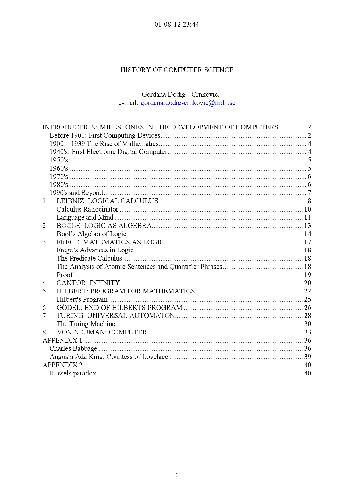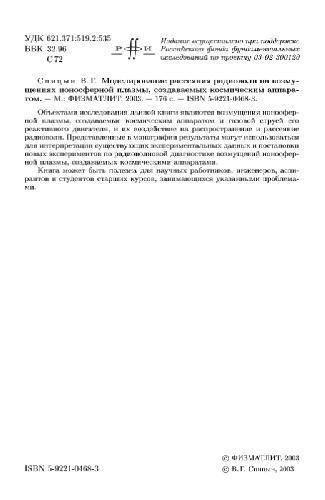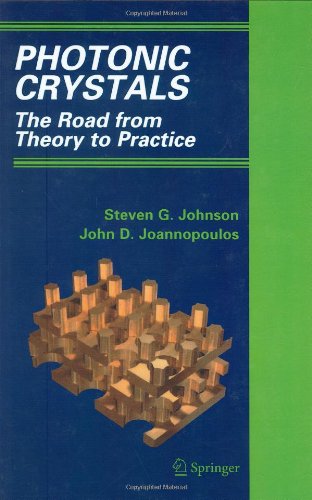J. M. T. Thompson9781860945779, 1-86094-577-5
Table of contents :
CONTENTS……Page 16
Foreword……Page 6
2. Background to the Series……Page 12
3. Invitation for Future Articles……Page 13
Reference……Page 14
Michael Thompson……Page 15
Cosmology and the Big Bang……Page 18
1. Introduction……Page 20
2. Summer Inside the Quantum Gravity Second……Page 21
3. Autumn – Fading Light and Condensing Mists……Page 24
4. Spring and the Flowering of the Cosmos……Page 27
5. Winter and Seventy Percent is Missing……Page 29
6. The End of Cosmology?……Page 32
Acknowledgments……Page 33
Bruce Bassett……Page 34
1. Introduction……Page 36
2. An Epistemological Analogy……Page 37
3. Basic Assumptions……Page 38
4. General Consequences……Page 39
5. Observable Predictions……Page 41
6. The Reheating of the Universe……Page 45
7. Eternal Inflation……Page 46
8. Variations on a Common Theme……Page 47
9. How to Rule Out Inflation……Page 48
10. Honest Criticisms and False Claims……Page 51
11. What Inflation Cannot Answer……Page 53
12. Conclusions and Outlook……Page 54
References……Page 55
Juan Garcuia-Bellido……Page 56
1. Introduction……Page 58
2. On the Role of the Constants of Nature……Page 59
3. Standard Cosmology: Stirred, but Not Shaken?……Page 61
4. Strings and Extra Dimensions……Page 63
5. A Cosmological Brane Scan……Page 64
6. How to Spot a Varying Constant……Page 66
7. Local Experiments……Page 67
8. The Recent Universe……Page 68
9. The Early Universe: BBN and CMB……Page 69
10. The Future: A Cosmologist’s Wish List……Page 71
11. So What is Your Point?……Page 72
Acknowledgments……Page 73
References……Page 74
Carlos Martins……Page 75
1. Introduction……Page 76
2. Large Scales……Page 78
3. Small Scales……Page 80
4. Conclusions……Page 89
References……Page 90
Andrew Benson……Page 92
1. Introduction……Page 94
2. The Early Studies of Active Galactic Nuclei……Page 95
3.1. Too fast to believe – remarkable jets in radio-loud AGN……Page 97
3.2. Obscuring-Doughnuts in Radio-Quiet AGN……Page 99
4.1. Quasar lifetimes and the black hole legacy……Page 101
5. Black Hole Demographics – the Host Galaxy Connection……Page 103
6.1. The violent early Universe……Page 105
6.2. Re-activating dormant black holes in nearby galaxies……Page 106
7. Unanswered Questions and Prospects for the Future……Page 107
References……Page 109
Carole G. Mundell……Page 112
Probing the Universe……Page 114
1. Introduction……Page 116
2. The Importance of CMB Measurements to Cosmology……Page 119
2.1. Temperature anisotropy……Page 120
2.2. Polarization anisotropy……Page 122
2.3. Initial conditions and connection to the early universe……Page 124
3. Interpretation of WMAP Data……Page 125
3.1.1. Discovery of the early reionization of the universe……Page 128
3.1.2. We now have a phenomenological “standard cosmological model”……Page 130
4. Combining WMAP Data with Other Data Sets……Page 131
4.1. Dark energy equation of state……Page 132
5. Implications for Inflation……Page 134
6. Conclusions……Page 135
Acknowledgments……Page 136
References……Page 137
Hiranya Peiris……Page 139
1. Introduction……Page 140
2. Nature of Gravitational Waves……Page 141
3. Interferometric GW Detectors……Page 143
4. Sources of Gravitational Waves……Page 145
4.1.1. Stellar mass compact binaries……Page 146
4.1.2. Massive black hole binaries……Page 148
4.1.3. Extreme mass ratio inspirals……Page 149
4.2. Neutron stars……Page 150
4.2.2. Equation of state and normal modes of NS……Page 151
4.2.3. Relativistic instabilities in NS……Page 152
4.2.4. NS environment……Page 153
4.3. Stochastic background……Page 154
4.3.2. Primordial background……Page 155
References……Page 156
B.S. Sathyaprakash……Page 158
1. Introduction……Page 160
2. Was Einstein Right?……Page 161
3.1. Neutron star properties……Page 163
3.3. Evolution……Page 164
4. Pulsar Timing……Page 167
4.2. Barycentric corrections……Page 168
4.4. Binary pulsars……Page 169
5.1. Tests of equivalence principles……Page 170
5.2. Tests of GR with double-neutron-stars……Page 172
5.3. Tests with pulsar structure data……Page 174
6. The Double-Pulsar……Page 175
7. Future Tests Using Pulsars and Black Holes……Page 176
References……Page 179
Michael Kramer……Page 182
1. GRBs – The Brightest Searchlights……Page 184
1.2. What are they?……Page 185
2. Pointers to Distant Galaxies……Page 187
2.1. The history of cosmic star formation……Page 190
3. Moving Swiftly on – Where Do We Go Next?……Page 191
4. Illuminating the Dark Ages……Page 192
4.1. A brief history of the first billion years of the universe……Page 193
4.2. Slicing through time……Page 195
5.2. Cosmological parameters……Page 197
5.3. Testing quantum gravity with GRBs……Page 198
References……Page 199
Nial R. Tanvir……Page 201
1. Introduction……Page 202
2. Radio Interferometry Data Products……Page 203
3. Developments in Interferometry……Page 207
3.2. Wide-band sensitivity: effects on data rates……Page 208
3.3. Increased collecting area for total sensitivity: the SKA……Page 210
4.1. Star formation in active galaxies……Page 212
4.2. The birth of stars and planets……Page 213
4.2.1. Finding conditions for life……Page 215
5. Virtual Observatories and Radio Archives……Page 216
6.1. Characterising galactic star formation……Page 218
6.2. Investigating the starburst-AGN link……Page 219
References……Page 220
Robert A. Laing……Page 223
Stars and Conditions for Life……Page 224
1. Introduction……Page 226
2. The General Picture……Page 229
3. Afterglows……Page 231
4. The Prompt Emission……Page 236
5. The Progenitor……Page 237
6. Open Problems and the Future……Page 239
References……Page 242
Davide Lazzati……Page 243
1. Introduction……Page 244
2. Dust and Light……Page 245
3. Dust and Chemistry……Page 247
3.2. Cold cloud effects……Page 250
4. The Origins of Dust……Page 251
5. To Grow, Shrink or Shatter……Page 252
6. Dust: A Space Odyssey……Page 255
7. Missing Metals……Page 257
8. Global Grain Models……Page 258
References……Page 260
Malcolm Gray……Page 261
1. Introduction……Page 262
2. Stellar Encounters……Page 263
3. The Stellar Zoo……Page 266
3.1. Blue stragglers……Page 267
3.2. Low–mass X–ray binaries and millisecond pulsars……Page 269
3.3. Cataclysmic variables……Page 273
4. Planets in Crowded Places……Page 274
5. Summary……Page 276
References……Page 277
Melvyn B. Davies……Page 279
2. The Interstellar Medium and Molecular Clouds……Page 280
2.1. Observations of interstellar molecules……Page 282
2.2. Gas-phase astrochemistry……Page 283
2.4. Interstellar organic chemistry……Page 287
2.5. Isotopic fractionation chemistry……Page 288
3. Prestellar and Protostellar Cores……Page 289
4. Protoplanetary Discs……Page 291
5. The Solar System……Page 294
Bibliography and Further Reading……Page 295
Andrew Markwick……Page 296
1. Introduction……Page 298
2. Finding Exoplanets……Page 299
2.1. Radial velocity – Doppler wobble……Page 301
2.3. Transits……Page 302
2.4. Gravitational microlensing……Page 304
3. Properties of Exoplanets……Page 305
3.1. 51 Pegasi’s exoplanet is not typical……Page 306
3.2. The planetary mass function rises towards lower masses……Page 307
3.3. The parent stars of exoplanets are very metal-rich……Page 308
3.4. Why don’t exoplanets have circular orbits like our Solar System?……Page 309
3.5. Is the semimajor axis distribution consistent with migration theory?……Page 311
3.6. Exoplanet atmospheres……Page 312
5. The Future of Planet Searches……Page 313
References……Page 314
James S. Jenkins……Page 318
Solar System and Climate Change……Page 320
16. Our Solar System Andrew Coates……Page 322
1. Introduction – The Solar System in the Last Four Millennia……Page 323
2. Origin of the Solar System……Page 324
3. Processes: Collisions, Accretion and Volcanism……Page 325
4. Evolution of Atmospheres……Page 327
5. Terrestrial Planets……Page 329
6. Our Planetary Neighbours……Page 334
7. Outer Planets……Page 335
9. Comets……Page 337
11. Asteroids……Page 339
13. Planetary Mission Example – Cassini-Huygens……Page 341
14. Other Solar Systems……Page 342
15. Conclusions……Page 345
Further Reading……Page 346
Andrew Coates……Page 347
1. Introduction……Page 348
2. Methods of Exploring Planetary Atmospheres……Page 351
3. Atmospheres in the Solar System……Page 352
3.1. Thermospheres……Page 353
3.2. Ionospheres……Page 356
4.2. Aurora……Page 359
4.3. Magnetosphere-Ionosphere coupling……Page 361
4.3.1. Earth……Page 362
4.3.2. Jupiter……Page 363
5. Energy Crisis in the Solar System……Page 365
6. Looking Beyond: Extrasolar Planets……Page 366
References……Page 367
Ingo Muller-Wodarg……Page 370
1. Introduction……Page 372
2. Observations……Page 373
3. Basic Dynamo Theory……Page 377
4. The Solar Dynamo……Page 381
5. Conclusions and Speculations……Page 385
References……Page 387
Steven Tobias……Page 390
1. Introduction……Page 392
2. The Mysterious Source of the Energy……Page 393
3. How to Spot a Flare BEFORE It Happens!……Page 397
4. How to Spot a Coronal Mass Ejection Before It Happens!……Page 398
4.1. Twisting and shearing!……Page 399
4.2. Global coronal waves……Page 401
4.4. Gigantic loops in the corona……Page 403
5.2. Stereo – A 3-D look at the Sun……Page 404
References……Page 405
Louise K. Harra……Page 407
1. Background……Page 408
2. Solar Forcing of the Troposphere……Page 411
3. Recent Evidence for Enhanced Solar Influences on the Middle Atmosphere……Page 414
4. Future Challenges……Page 425
References……Page 426
Neil F. Arnold……Page 429
Index……Page 430







Reviews
There are no reviews yet.